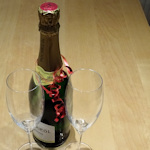
Molten lead, marzipan pigs, Freddie Frinton, the Pummerin, and Johann Strauss. Not the answer to an obscure Trivial Pursuit question, but just some of the traditions celebrated at a typical New Year in Vienna.
Let us begin…
- Book a concert experience* for your Vienna trip
- See also:
- The Silvesterpfad (the city’s official trail for revellers)
- The New Year markets
Before midnight
Like just about everywhere in the world, friends and families gather together on New Year’s Eve in Vienna (or Silvester, as it’s known in German) to celebrate and think of all the resolutions they can break within the next week.
Pigs and more
These New Year’s Eve gatherings typically involve the exchange of small symbolic gifts.
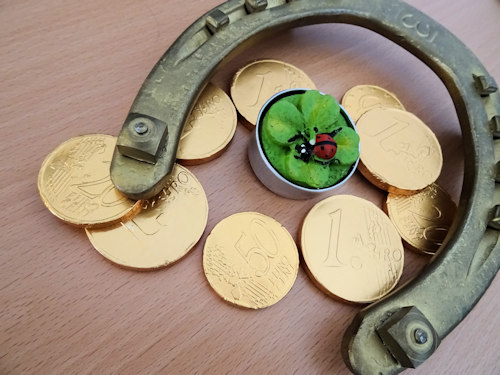
(Chocolate coins make a popular gift, along with symbols of good luck)
Lucky charms are a common choice, with motifs like:
- Pigs. (Schwein gehabt – to “Have had pig” – is a German expression for having had a stroke of luck. Which is why you find pigs everywhere at New Year)
- Fungi (particularly the fly agaric, Amanita muscaria: not a word I expected to have to know for an article on the Viennese New Year)
- Clover (often gifted as a real plant in a small decorative pot)
- Chimney sweeps, ladybird beetles, horseshoes, and others
In the days leading up to New Year, Vienna fills with stands selling these charms, mostly as cheap, mass-produced items or edible versions made of marzipan.
The same motifs may appear at the New Year markets, albeit in more artistic guises.
Other common “lucky” gifts include fish-shaped sponge finger biscuits and instant lottery tickets you can open right away to discover if you’ve won a prize.
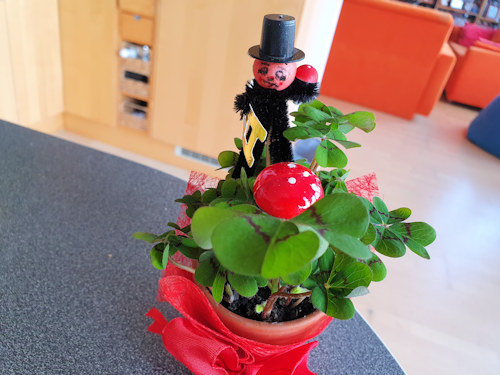
(Three lucky charms in one: four-leaved clover, a mushroom, and a chimney sweep who might have had a little too much sparkling wine)
Bleigießen (lead casting)
A common pastime at Silvester parties was always to play with molten lead; the modern versions of this fun activity are far less risky.
If this fails to strike you as an obvious year-end ritual, you’re not alone: a bit of explanation might be required.
Traditionally, you would hold a lump of lead over a candle on a specially-designed spoon, wait until the metal melts, pour the molten mass quickly into a bowl of water, then eventually fish out the cooled and hardened object.
Which doesn’t sound like a whole lot of fun.
Ah, but…the shape the lead took in the water allegedly predicted your future, which was the whole point of the exercise. So, for example, a crown shape suggested financial success.
English even has a word for this form of divination: molybdomancy.
These days, the Bleigießen sets you buy for New Year don’t actually contain lead at all. After all, it’s poisonous and lead-based sets are illegal. People use tin or wax instead.
As you might suspect, melted metal or wax tends not to form recognisable shapes in the water; you have to use your imagination. Helpfully, this also means you can conveniently see shapes that foresee a rosy future.
Don’t try this at home without using a certified set, and be sure to follow the instructions and warnings.
Dinner for one
Many countries have a TV programme intimately associated with a holiday. Love Actually and Christmas in the UK springs to mind. In Austria, it’s Dinner for One at New Year. And that’s not a translation of the title.
Every New Year’s Eve, the national state broadcaster (ORF) plays the 1963 black and white English-language sketch, usually in the hour before midnight.
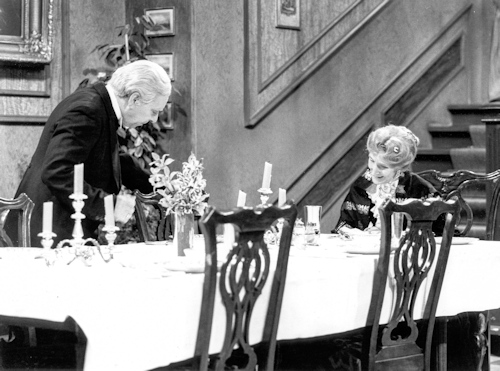
(A scene from the piece; Press photo: ORF/NDR/Annemarie Aldag)
Freddie Frinton is butler James to May Warden’s Miss Sophie, who is celebrating her 90th birthday with a dinner.
Since the traditional birthday guests have long since departed this world, James impersonates each so as not to disappoint his short-sighted employer. This involves consuming considerable amounts of alcohol, with the inevitable consequences.
All the dialogue is in English, though the sketch has a German introduction. A phrase from the show (“Same procedure as every year”) has even entered the German vernacular.
Austria’s not alone in this tradition, but one country where the sketch rarely appears on TV is…the UK. I grew up in England and had never heard of it until I moved to Vienna.
Midnight
So, after a few drinks and fun, midnight approaches, and all eyes (and ears) turn to…
The Pummerin
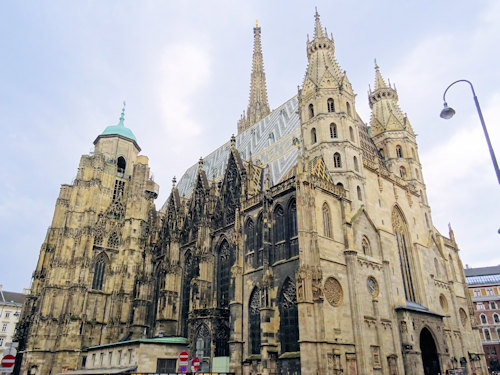
(The domed tower on the left of the photo houses the Pummerin bell)
The curiously-named Pummerin conducts the countdown to the New Year in Austria. That’s not some strange position held by a wizened old timekeeper, but the huge 20-tonne bell located in the north tower of Stephansdom cathedral in the very centre of Vienna.
During the year, you can take a lift up the tower, get close to the bell, and enjoy the views of central Vienna and the cathedral’s roof mosaic.
Towards midnight, the crowds gather in the square outside to hear the Pummerin ring, and TV and radio stations broadcast the sound across the country. Then the sky explodes…
Fireworks
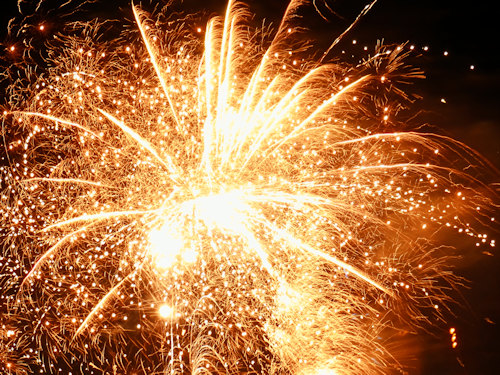
(Expect a lot of this)
At midnight, fireworks or laser light displays begin in earnest. (Most home/personal fireworks are forbidden it should be noted).
Vienna lights up in a raucous and colourful celebration that may continue for a good half an hour or more.
We like to sit on our balcony and watch the displays across to the hills in the west. On a clear night, it’s quite fabulous. Many shows also begin well before midnight.
At the same time, it can get remarkably loud. And not everyone is considerate about where they let off their bangers and rockets.
The Blue Danube Waltz
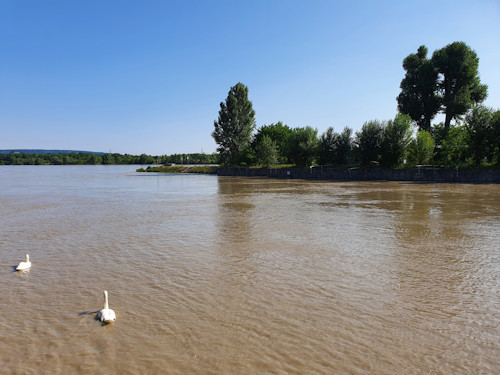
(The not-so-blue Danube)
Once the echoes of the Pummerin die away, TV and radio stations switch to Johann Strauss’s Blue Danube waltz. Those not fiddling with a firework fuse then grab a partner and dance in the New Year.
After the waltz, all that remains to do is drink a glass of champagne or sparkling wine, nibble at your marzipan pig, and try not to think about all the clearing up.
P.S.
The next day (January 1st) has its own tradition, too, as it happens. The new year begins, as you might expect from a city possessing such a musical pedigree, with a classical concert.
The world-famous Neujahrskonzert (New Year’s Concert) starts around 11.15am with a live broadcast on TV and often open-air screenings at one or two locations in the centre.